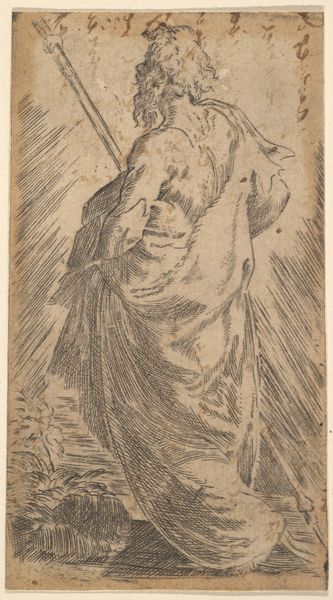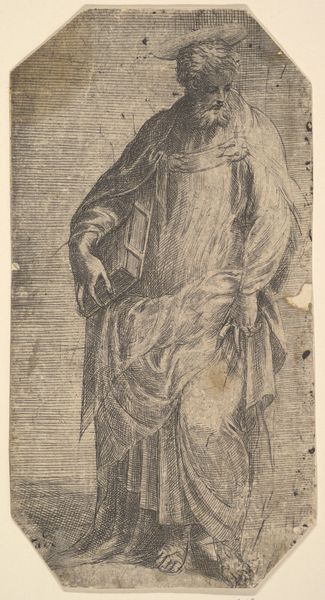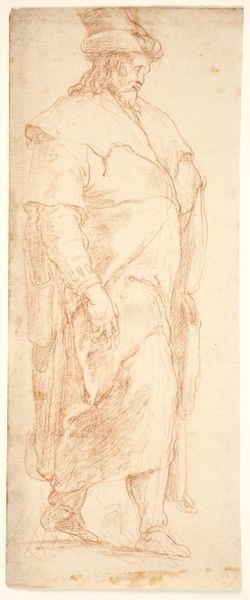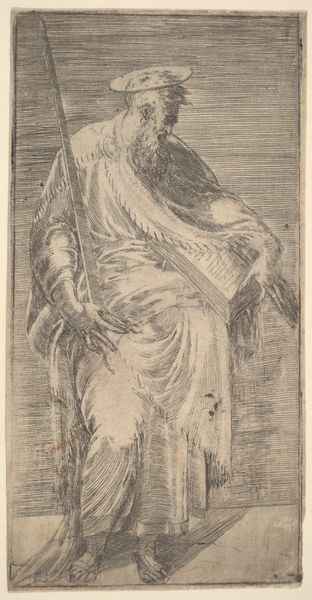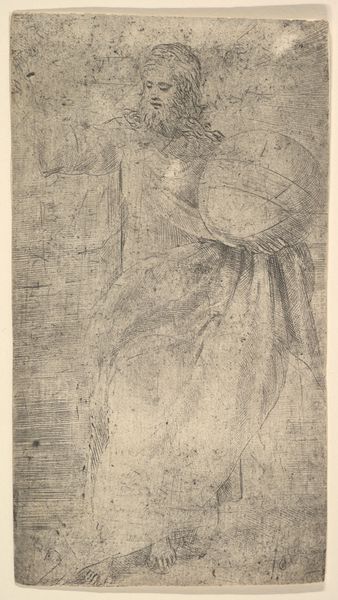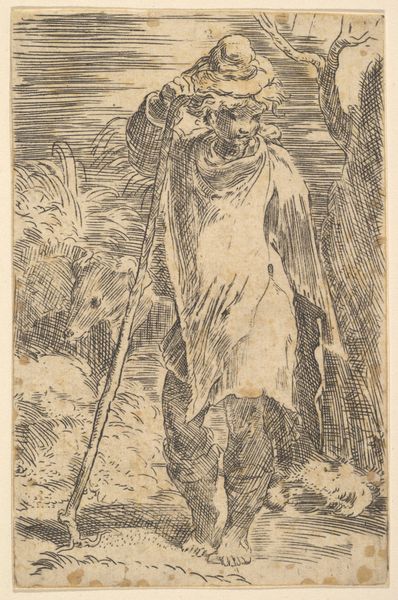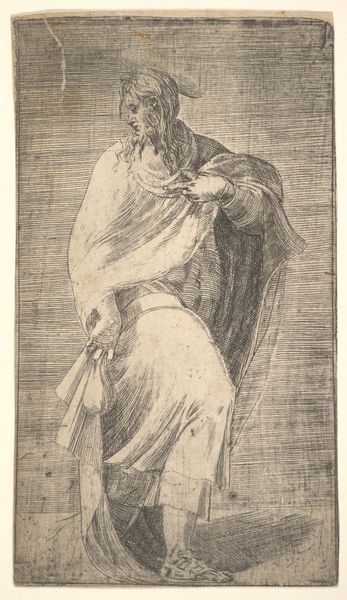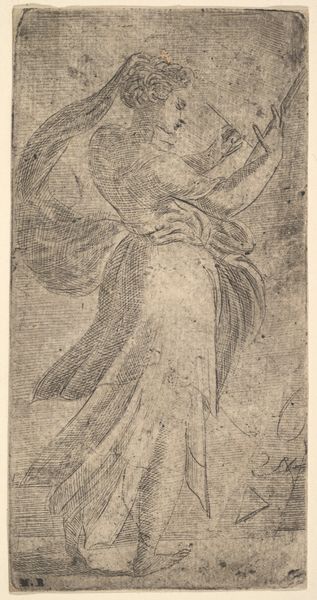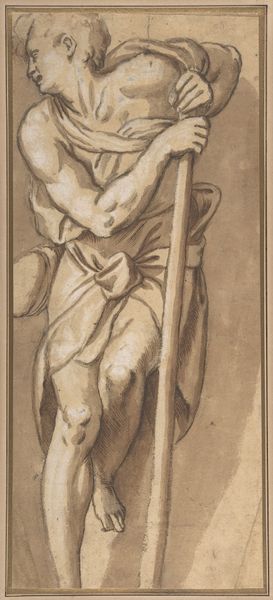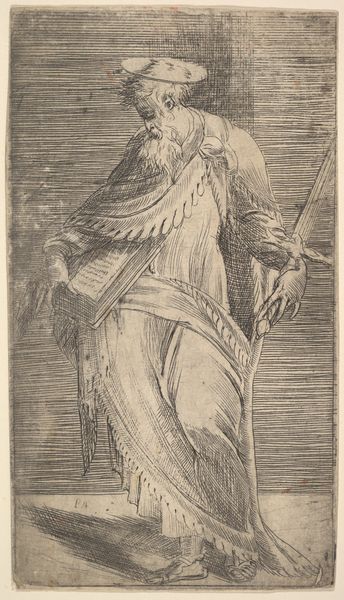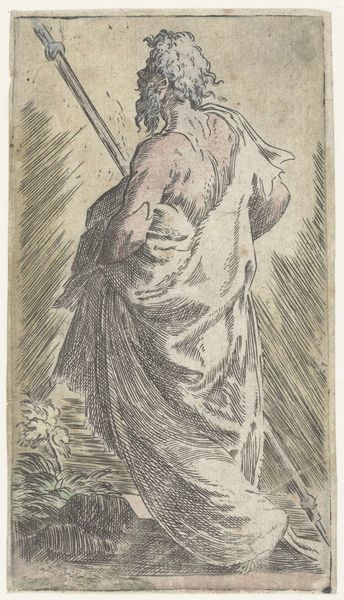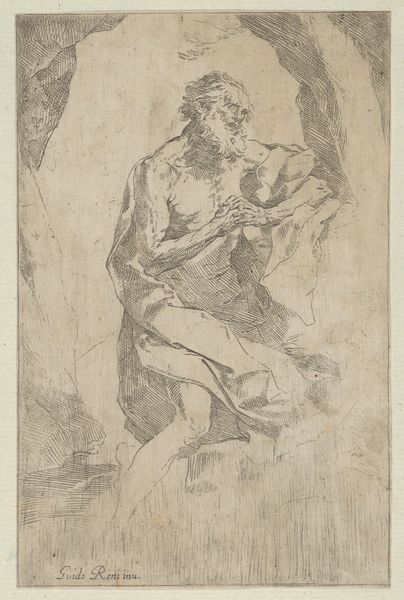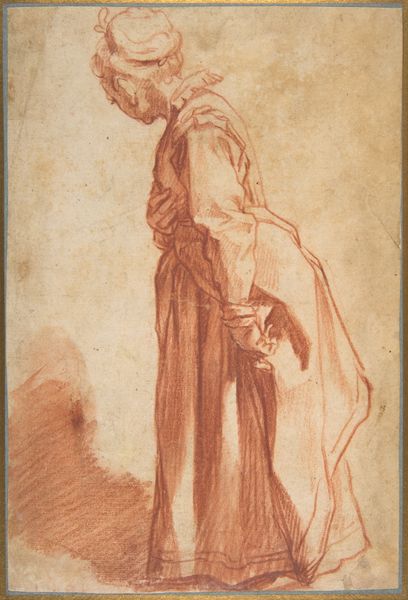
An apostle holding a staff facing left 1535 - 1545
0:00
0:00
drawing, print, etching
#
drawing
# print
#
etching
#
figuration
#
11_renaissance
#
history-painting
#
academic-art
Dimensions: sheet: 4 1/2 x 3 1/8 in. (11.5 x 8 cm)
Copyright: Public Domain
Curator: Let's explore "An Apostle Holding a Staff Facing Left," an etching by Andrea Schiavone created sometime between 1535 and 1545. It resides here at the Metropolitan Museum of Art. Editor: My first impression is one of austere solemnity, almost theatrical. The raking light and cross-hatching create a somber mood. Curator: Indeed. Consider the sociopolitical turbulence of the mid-16th century, with religious reformation reshaping the landscape of power. Schiavone, situated in Venice, navigates these shifts. An apostle here signifies not only religious conviction, but potentially resistance and leadership during change. Editor: That's interesting, although the formal qualities scream mannerism to me. The elongated figure, the somewhat awkward pose... It draws attention to the artifice of the image, perhaps even subverting the devotional aspect. What is most prominent for me is how the rays surrounding the figure destabilize any solid meaning. Curator: The etching technique itself speaks to democratization of knowledge in that period. Etchings allowed for broader dissemination of religious and historical narratives, playing a role in shaping public perception. This apostle is a man of the people, mediated by an increasingly accessible art form. His body language, although theatrical to our eyes, may have resonated with specific doctrines. Editor: I concede to that, but those almost aggressively stylized rays also push toward abstraction. Schiavone uses the linear nature of the medium to its full potential, emphasizing a visual language over representational accuracy, wouldn't you say? The light isn't illuminating the scene in a natural way; it’s an emblem. Curator: I think your focus on the stylized nature is valid but also somewhat ahistorical if that makes sense. The conventions of his era, of what a leader and powerful spiritual icon were intended to represent still has resonance if the viewer considers it. Editor: Perhaps...I think seeing how technique itself reflects these currents, not just iconography or narratives, gives a well-rounded picture. Curator: Absolutely. Recognizing how historical narratives interact with artistic choices and socio-political circumstances illuminates a powerful connection between art and audience. Editor: Indeed, that tension between symbolism and stylistic expression reveals much about art in society then and how art operates in visual discourse to this day.
Comments
No comments
Be the first to comment and join the conversation on the ultimate creative platform.
